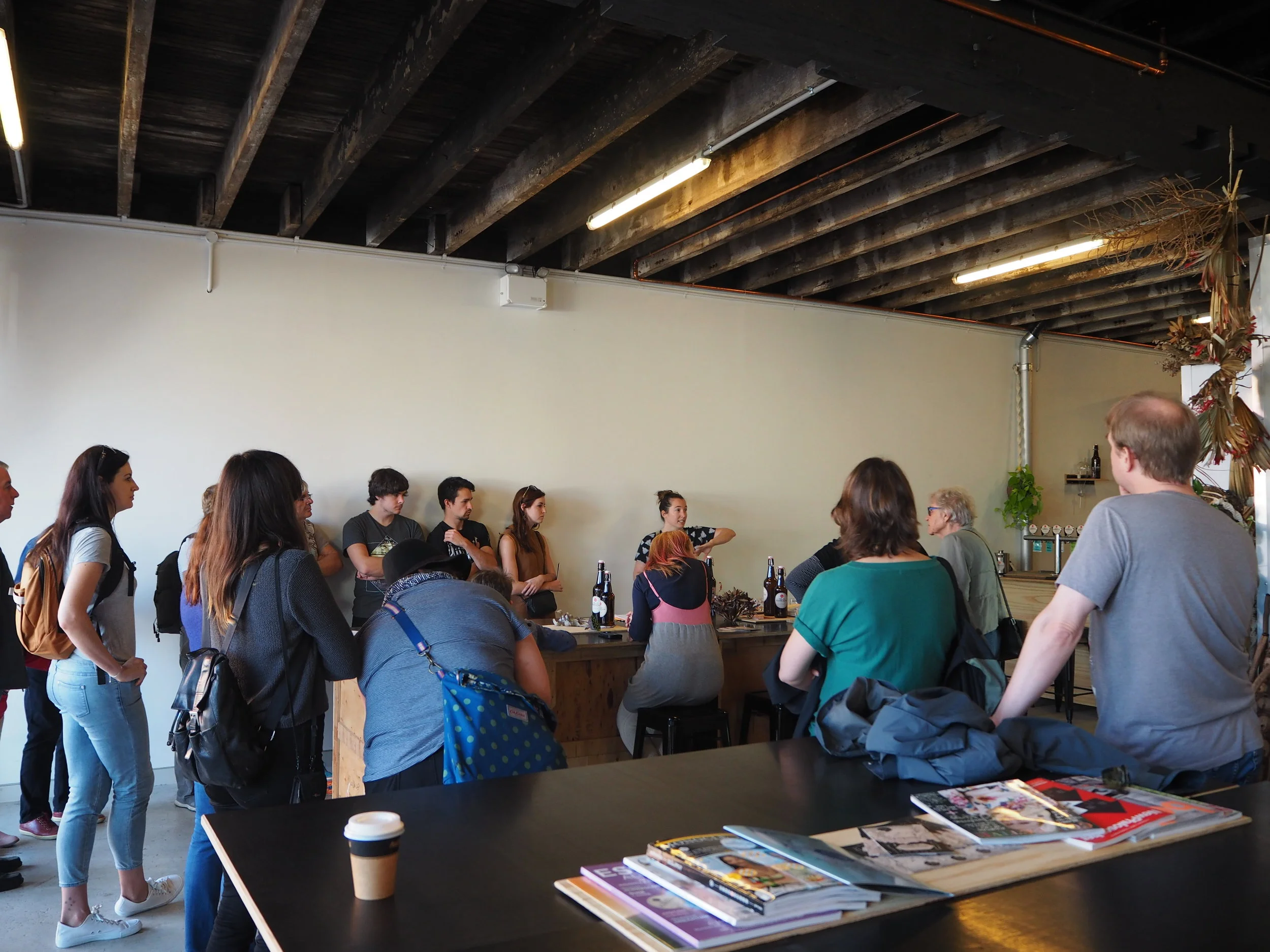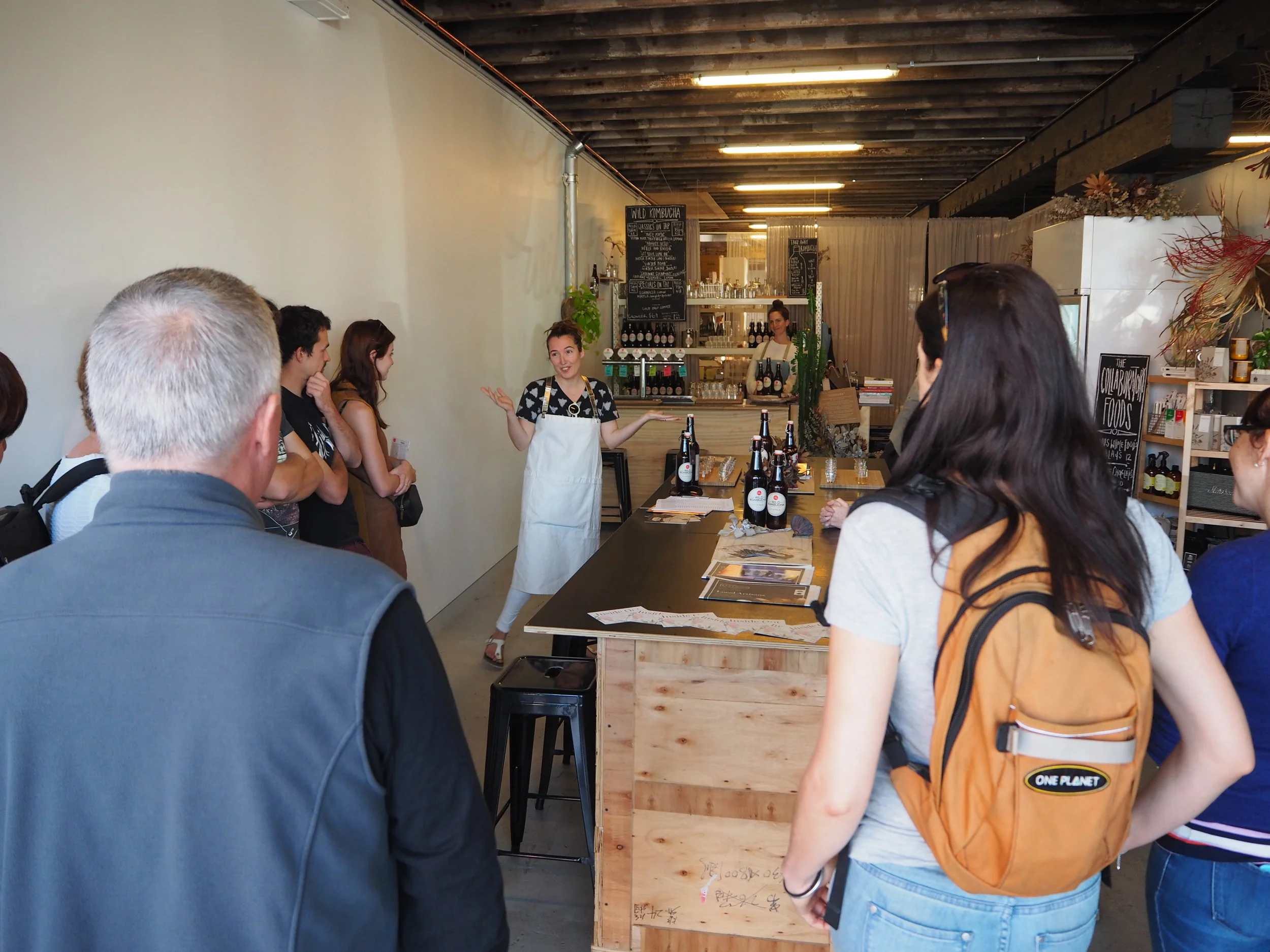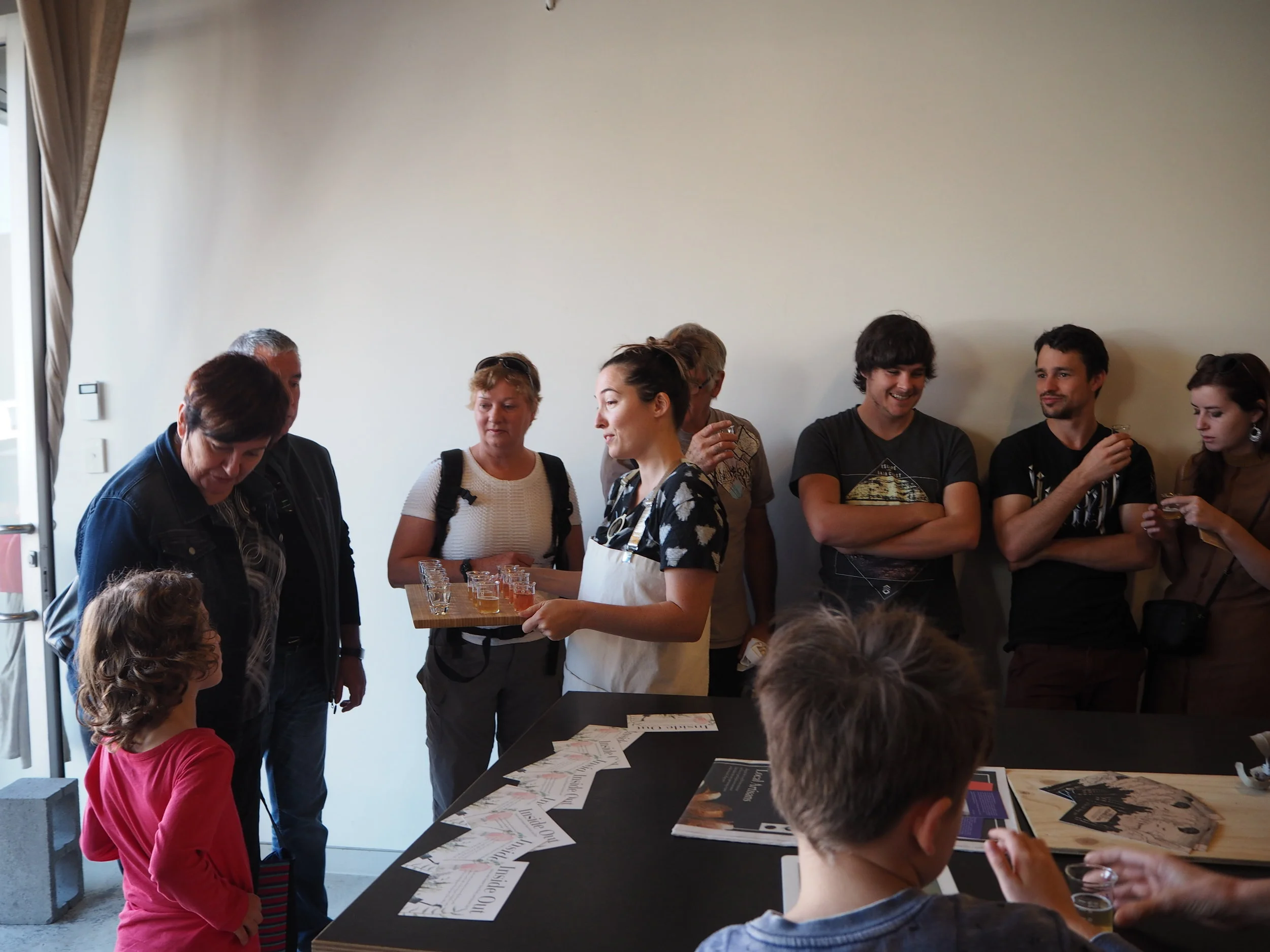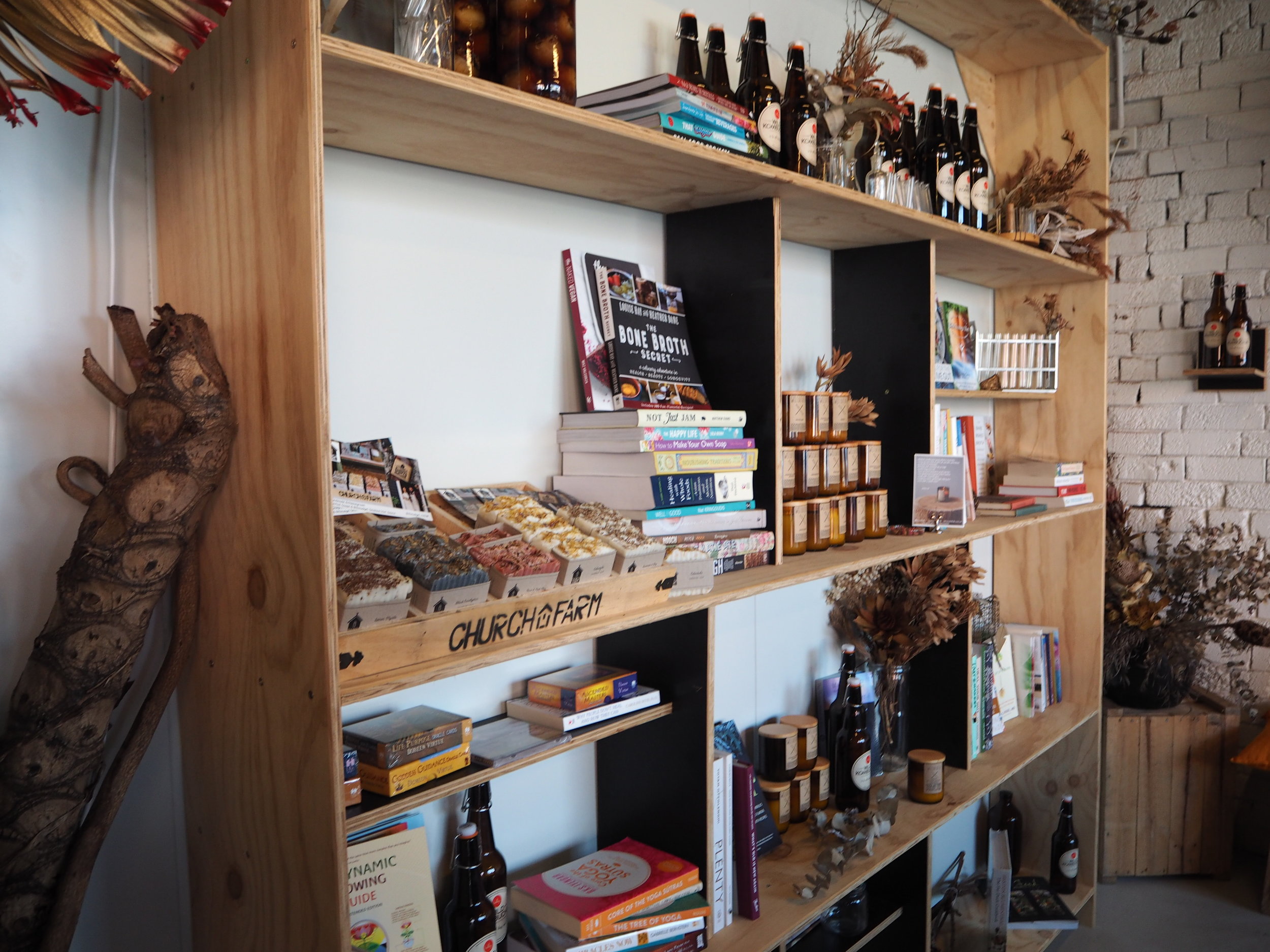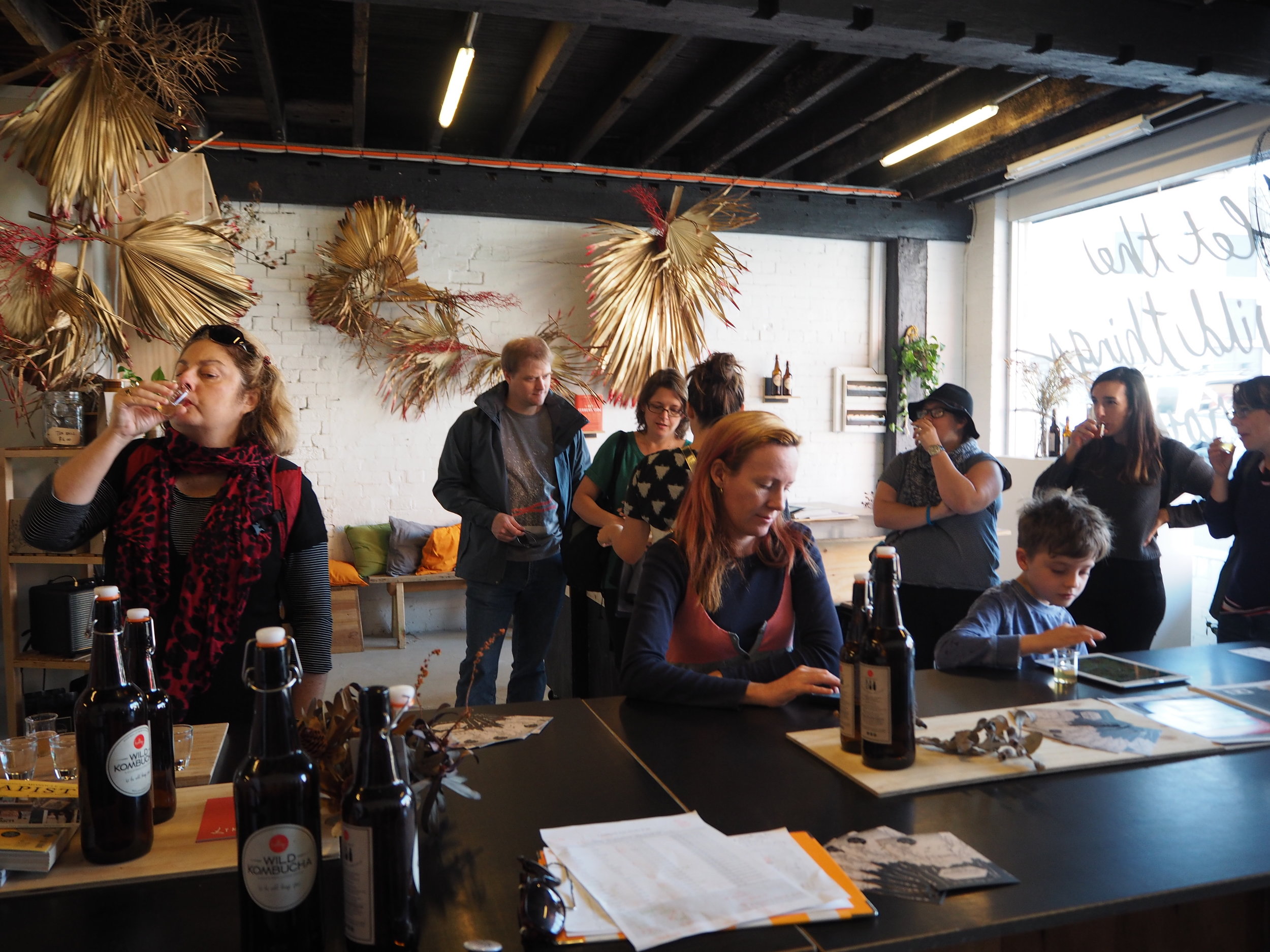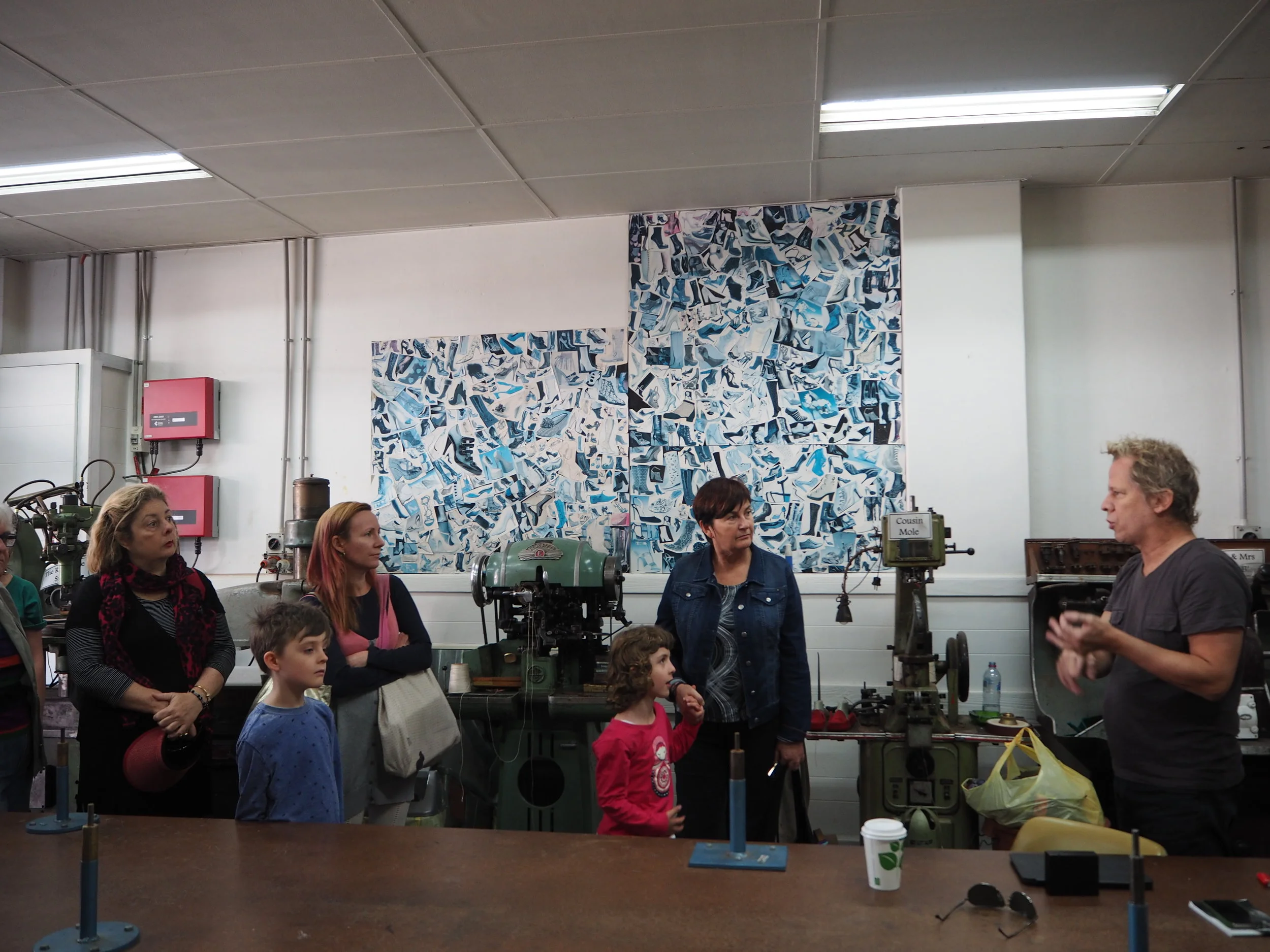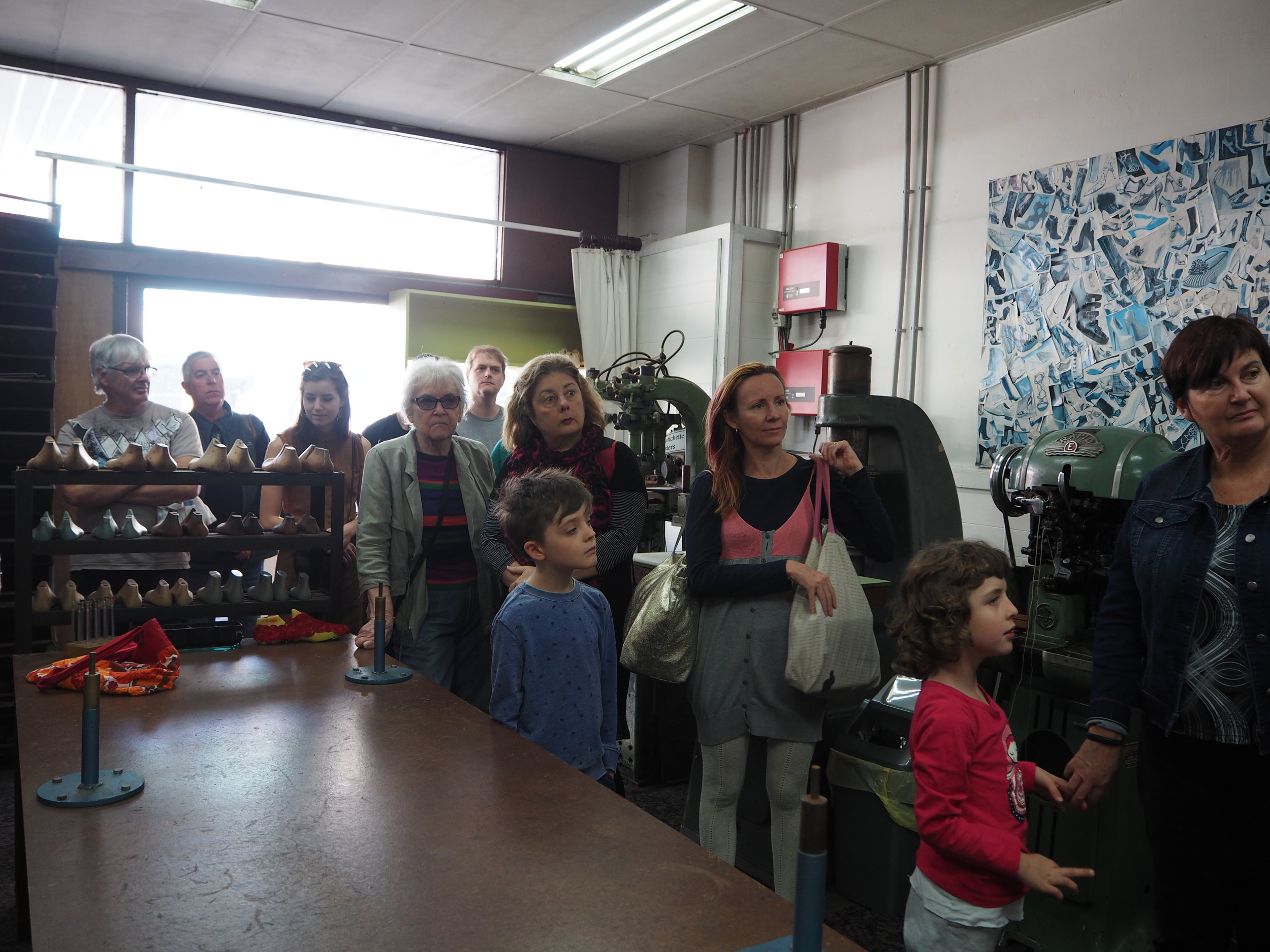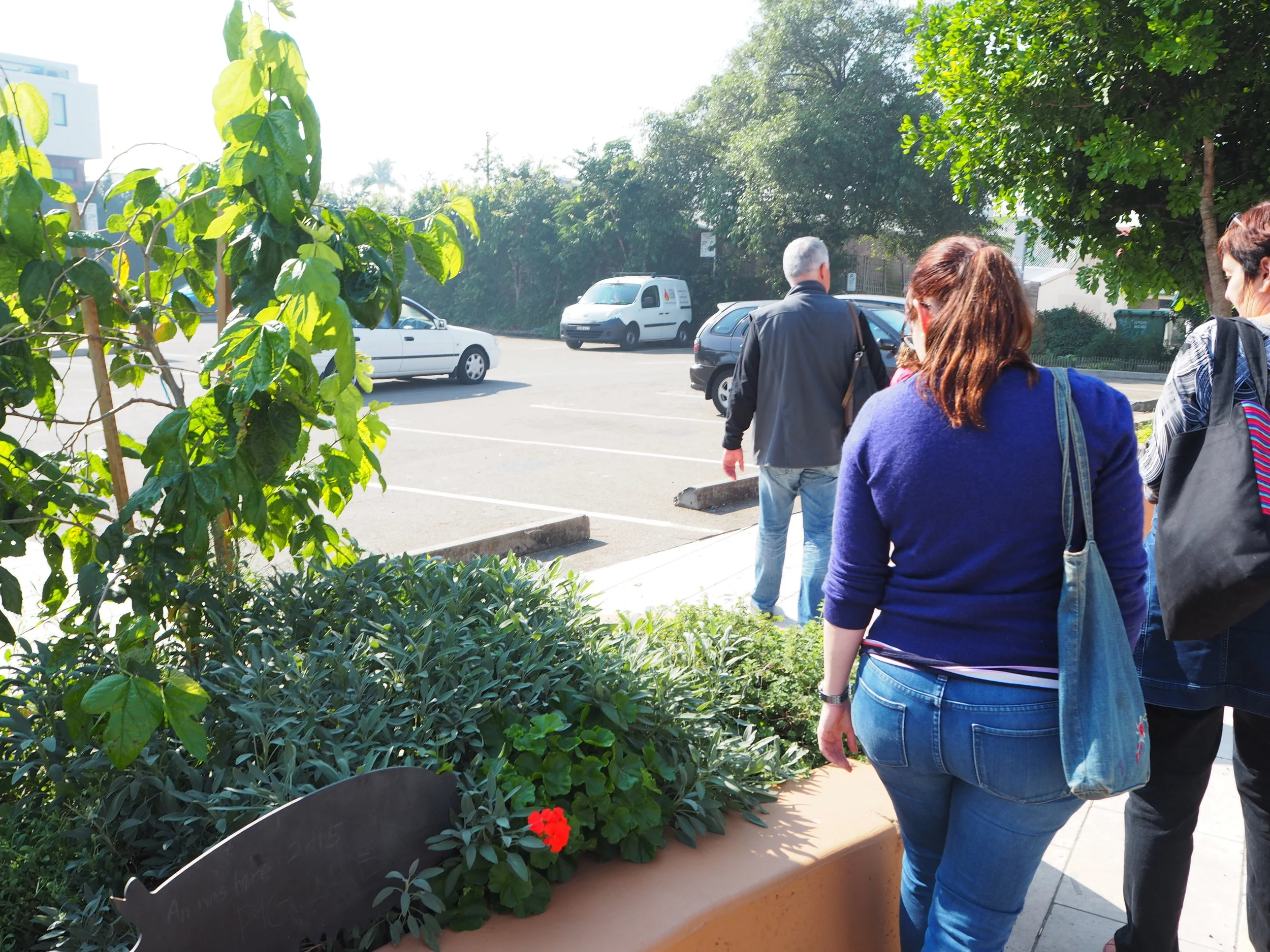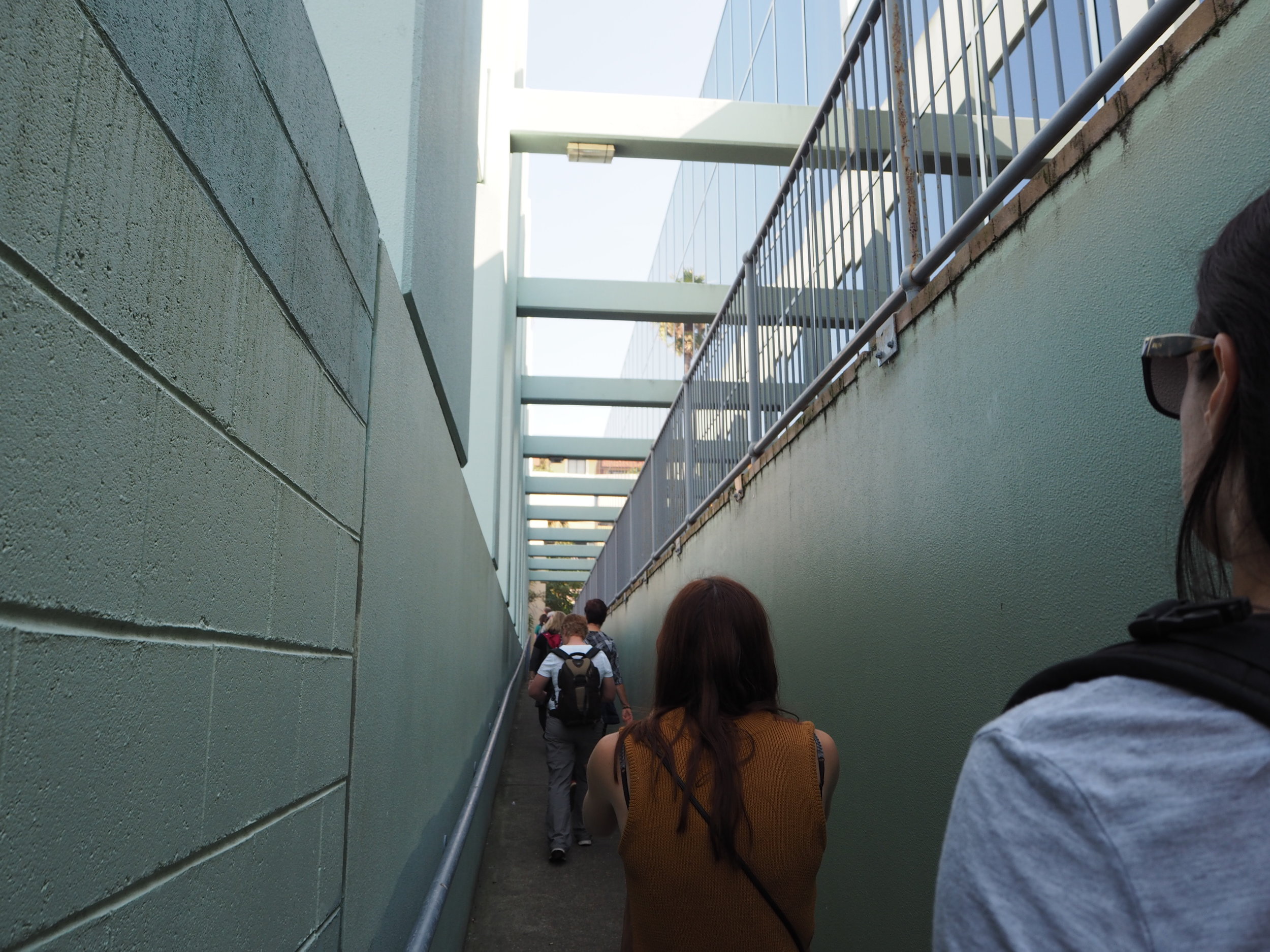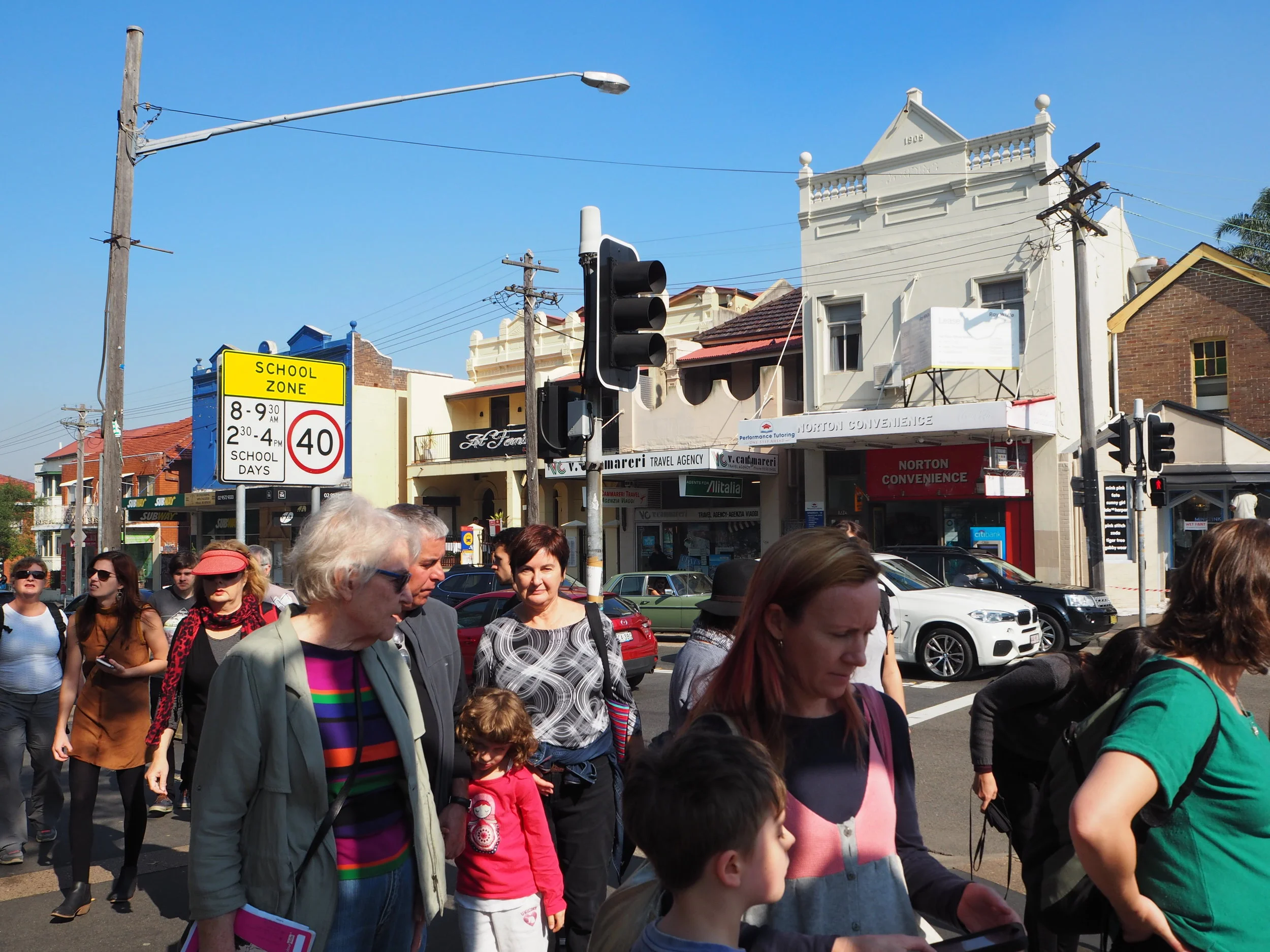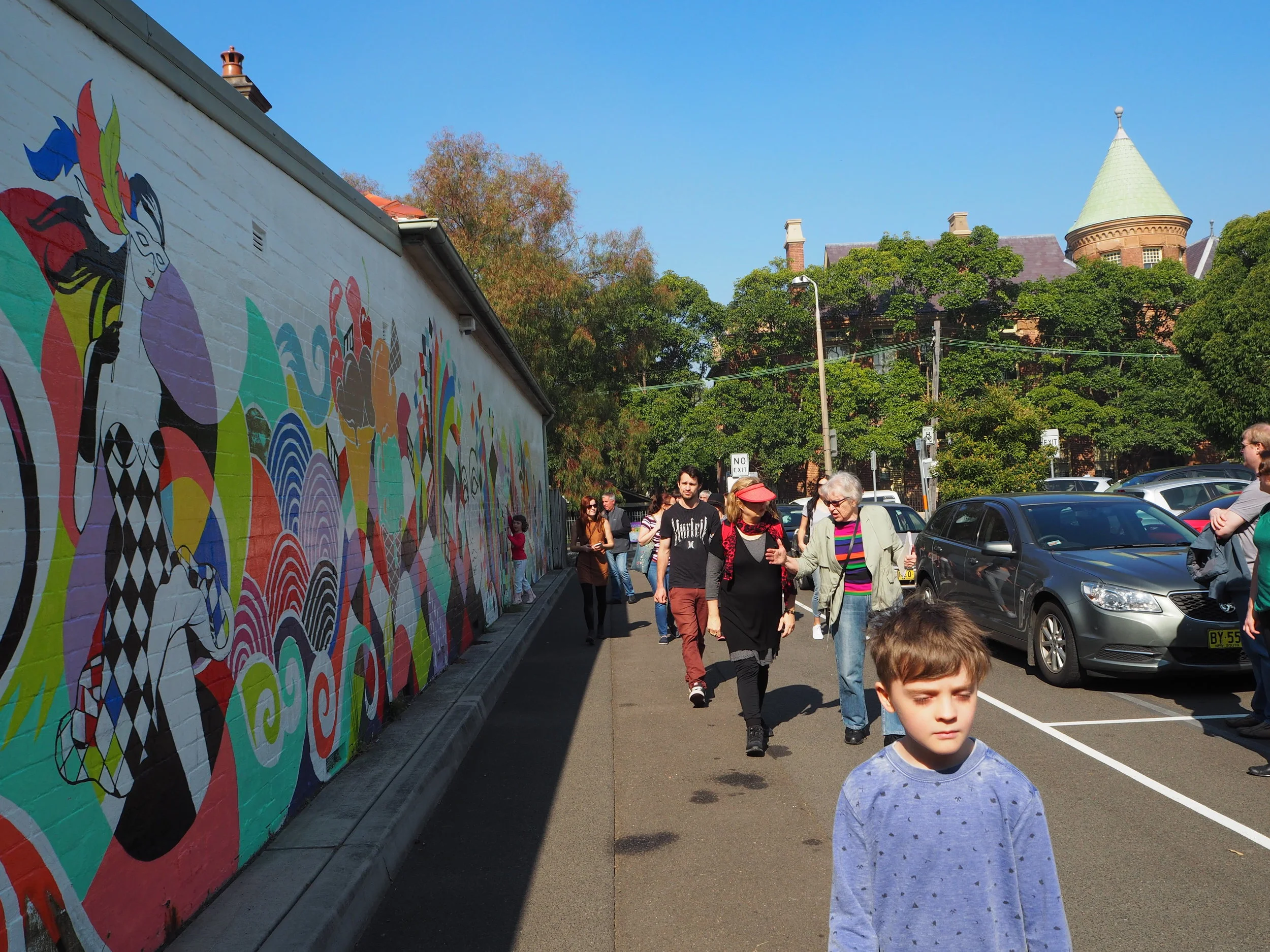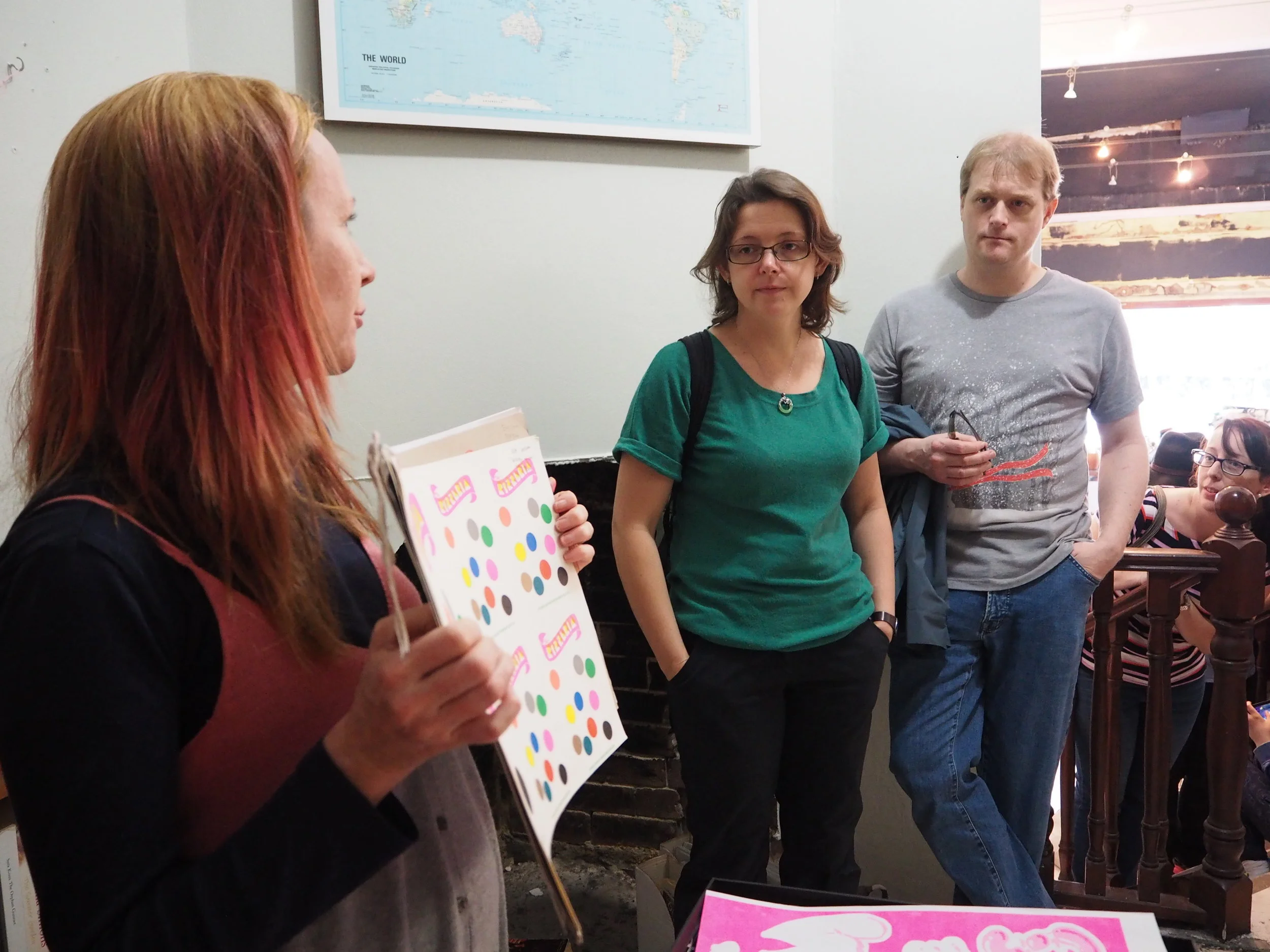Creative Placemaking in Leichhardt, Australia-An Interview with Simone Sheridan
/Photo Courtesy of Simone Sheridan
Simone Sheridan is the artist, creative producer and placemaker behind Street Art Walking, a program of over 20 street art works in Newcastle, NSW which has gained international attention.
Simone graduated from Fine Art at the University of Newcastle, majoring in Printmaking. As well as pursuing her own practice, Simone founded Street Art Walking in 2011. The project has its roots in creative placemaking, and has seen over 20 site-specific street art interventions across the city, ranging from traditional murals to legal flypostering. This work has been written about across the world, and has seen Simone invited to join the Project for Public Spaces Placemaking Leadership Council. She attended the organization’s inaugural meeting with over 200 placemakers from across the globe in Detroit, Michigan.
Alongside Street Art Walking, Simone has acted as consultant for This Is Not Art Festival, the Create Innovate Gosford City Project and Hunter Development Corporation. She is a keen advocate for the arts and placemaking, but is particularly interested in building meaningful collaborations between artists and businesses.
Simone is experienced in project management, creative marketing, event management and project creation. She is an experienced speaker on placemaking, public art and street art.
What is your relation to Jane Jacobs Walks?
I found out about the Jane Jacobs walk at an Urbanista Sydney meeting earlier this year. (Urbanista is a global, collaborative network amplifying the voice of women by supporting ideas, projects and actions that create positive change in our cities and communities.) At the time I was working with a place making organization, Place Partners, to coordinate a mural on a blank wall along with some other temporary space activation projects along one of Sydney’s most well-known streets—Oxford Street. I met other passionate women who were hosting their own walks and it inspired me to show off Parramatta Road and Norton Street, as I had noticed people saying a lot of generalized statements about both of those places since I moved there. I thought it was time to show off some my favorite places and local finds of the area while also using it as a chance to talk about some of the issues within the area relating to urban development.
2. How has Jane influenced your work, do you have a favorite book of hers?
I suppose the influence is really just beginning. Before doing the walk, I had only heard her name in reference or quotes. I had always wanted to read The Death and Life of Great American Cities and I finally got a copy recently for my birthday. I am excited because I relate heavily to her work, at least from what I’ve read so far!
3. Why were you interested in hosting a walk in Sydney?
I moved to Sydney in late 2014 and it was my second time living there, so I thought adjusting would be a breeze. Yet, I think I underestimated how many things about my former home, Newcastle, had become integral to a positive quality of life. I moved to a really busy intersection on Norton Street and the city west link, which often meant waking up to braking trucks. Walking tour research actually began in early 2015 when I was working as a contractor for Renew Australia on their Renew Leichhardt program. I lived on Norton Street and I was working with creative projects on the very same street. I enjoyed being ‘local’ in Sydney! I had an idea to create a ‘Winter Wander’ to connect the creative projects that were activating formerly unused retail spaces on Norton Street but the tour did not launch at the time. When I heard about the Jane Jacob’s Walk later the next year, I realized it was a perfect fit, so I added some small businesses that focused on sustainability and bespoke design.
Photo courtesy of Simone Sheridan
4. Do you have any stories from the walk?
We had a wonderful experience stumbling across the School Of Footwear, which was about to hold a class. We were asked in, given a tour of the space, and told about the art of hand making footwear. One of the guests also wrote the most inspiring letter to The Mayor saying how special the walk was. That was probably the biggest win, to know that it had such a positive influence on someone that the next day they got up early to formally write to The Mayor of Leichhardt.
5. What is Street Art Walking and what is your role there?
I started Street Art Walking (SAW) in Newcastle in 2011 after identifying a need for a solution to graffiti management for property owners, whilst finding contracts for artists. Between 2011 and 2014 I worked on a range of projects including murals, events, paste-ups, posters, and place making for clients such as The Global Property Trust Group, Lake Macquarie Council, Hunter Development Corporation, The City of Newcastle, UrbanGrowth, Destination NSW, NSW Trains, Newcastle NOW and a range of small businesses.
In 2014 I moved to Sydney and SAW has made a progression to being a cultural tourism service, hosting bespoke walking and cycling tours in Newcastle and Sydney. I have really been winding back much of the mural making work and have been very interested in the field of place making. I am passionate about keeping public spaces open for the public and I feel glad that SAW is able to be part of these discussions as a member of the Project for Public Spaces Placemaking leadership Council.
6. What are your hopes for the future of Leichardt with regards to Jane Jacobs Walks?
I would like to do one regularly (perhaps monthly or bi-monthly) and am looking at creating ones for different areas with different topics. I am passionate about empty spaces, public art and creating places that increase walkability.
7. What are your goals when you host a Jane Jacobs Walk for the participants?
My goals are to get people looking at places with a different view, to slow down and appreciate their surroundings with time to wonder. I have found that the pace of Sydney can be stressful, with many people complaining about parking (not enough car parking, parking is too expensive, etc.) but I grew up in a town (Mudgee, N.S.W.) that didn’t even have public buses, which meant so much walking. I enjoy it and I want to remind people that you can often see things walking that are invisible if you are driving.
We want to give a huge thanks to Simone for doing this interview, as well as her dedication to her community in Leichhardt.





